2016 Turner RFX v4.0 Enduro - Review
Turner Bicycles spent the better part of three years developing its second carbon-framed mountain bike – the 2016 RFX v4.0 Enduro. The back story is that RFX was first introduced in aluminum in 1999 as an all-mountain/freerider and had earned a loyal following. Founder and designer David Turner was nearing the production phase with a carbon fiber version when the industry abruptly switched to 27.5-inch wheels. Turner considered the options and decided to scrap the substantial investment he had in molds and prototyping costs for the 26-inch RFX, and forge ahead with an all-new 27.5-inch wheel machine.
Looking back, Turner said that starting once more from scratch gave he, and suspension designer Dave Weagle, the opportunity to incorporate knowledge learned from the rapid evolution of enduro-specific bicycles which took place at the time he was working on the original 26er. As a result, the new RFX is longer, a bit slacker up front, and its suspension is better suited for high-speed runs down trails that were once the realm of big bikes. But, unlike many contemporary enduro bikes that prioritize downhill performance well above pedaling efficiency, the RFX V4.0 balances its edgy frame numbers with a crisp-pedaling dw-link rear suspension. That, and Turner's switch to carbon construction, has produced a wonderfully versatile, 27.7-pound enduro racing machine that that should become a favorite among all-mountain trail riders as well.
Details: RFX v4.0 Enduro
• Purpose: Enduro competition, all-mountain/trail
• Frame: High modulus carbon construction, 160mm-travel dw-link rear suspension, external hose and cable routing, 142/12mm axle, threaded bottom bracket, ISCG 05 chainguide tabs.
• Wheel size: 27.5, clearance for 2.4-inch tires.
• Shock: RockShox Monarch Plus with Debonair sleeve.
• Fork: 160mm stroke recommended (RockShox Pike furnished with builds).
• Adjustable head angle: Tapered head tube designed to use FSA +/-1 degree headset cups.
• Front derailleur compatible: Direct mount and cable guides for Shimano side-swing mechs.
• Screw-in cable guides: Adel-type clamps secure hoses and housings to the frame.
• Suspension pivots on Enduro Max sealed ball bearings.
• Sizes: Small, medium, large, and X-large.
• Weight as tested: 27.7 pounds (12.6 kg). (Frame weight: 6.5 pounds/2.96kg with shock and hardware)
• MSRP: Five complete builds from $4573 for the GX, to $6533 for Shimano XTR (Frame and shock - $2995).
• Contact: Turner Bicycles
Construction
Turner designs its frames at its headquarters in Murrieta, California, and then outsources the aluminum manufacturing to a US frame maker in Portland, Oregon, while the carbon manufacturing of the Czar and the new RFX v4.0 is delegated to a high-end frame maker in Asia. Neither should be cause for concern, as Dave Turner has been in the game since 1994 and has relied upon outside manufacturing since day one. To ensure that all the bits are up to snuff, Turner does all of the final checks, machine work, and assembly in Murrieta. Complete builds are also assembled there, ride-checked, and then partly disassembled for shipment.
Toray is a Japanese carbon fiber supplier that is considered by bicycle makers to be the number one source for high-performance composite materials. Reportedly, the RFX chassis is laid up exclusively with a blend of Toray's high-modulus uni-directional carbon products, which results in a lighter, stiffer and extremely strong frame. Turner did not stray from the proven profile of its aluminum frames when he penned the carbon RFX, including a nod to their traditional rectangular seat stays and steeply sloped top tubes. The suspension is also similar, with a Dave Weagle-configured dual-link system driving the shock parallel with the seat tube. Call it antiquated, but there can be no argument that the bottom bracket area is the strongest part of the frame to mount a shock - and doing so leaves room for a single bottle mount on the down tube.
Taking full advantage of a high-strength molded material, the RFX's swingarm is widened to provide ample clearance for 2.4-inch tires near the bottom bracket and up top, the traditional seat stay bridge has been eliminated to provide room for the tire and also to clear the seat tube at full compression. Dave Turner has been a shorter-is-better proponent when it comes to chain stay length, so it should come as no surprise that the RFX's rear end is designed around 17.25-inch (438mm) stays - pretty good for a 160-millimeter-travel bike with a 27.5-inch wheel and DH-width rubber.
 The performance of the Turner's RockShox Pike fork needs no introduction. The big surprise was how well the Monarch Plus Debonair damper played with the RFX's dw-link suspension.
The performance of the Turner's RockShox Pike fork needs no introduction. The big surprise was how well the Monarch Plus Debonair damper played with the RFX's dw-link suspension.Details abound on the newest Turner, beginning with the use of ball bearings in the pivot locations. Turner, who had been a staunch supporter of composite bushings, switched to Enduro Max ball bearings for the RFX because they allegedly enhance the suspension's response to small bumps, and because their full-compliment ball configuration is specifically designed for a bicycle suspension's high loads at low rotational speeds. The post-mount rear brake caliper features threaded aluminum dowels that eliminate the possibility of stripping a threaded insert bonded inside the carbon swingarm. The one place you will find a threaded insert is the bottom bracket, which is also endowed with ISCG 05 chainguide tabs.
Up front, the RFX's tapered headset interface is designed around FSA's angle-adjust headset cups. Stock frames are shipped with zero-degree cups, but customers can order the adjustable, plus or minus one-degree, cups directly from Turner Bicycles. The stock head angle is 66 degrees, so RFX owners can opt for either a 65 or a 67-degree angle depending upon their skillsets or theaters of operation
RFX frames buck the internal cable and hose routing trend, and perhaps that is a good thing. Turner uses threaded bosses and a combination of Cannondale-style T-stops on the downtube and Adel-type clamps elsewhere on the frame to secure full-length housing and hydraulic hoses. A port on the seat tube facilitates internally actuated dropper posts. Most RFX builds will leave Turner with one-by drivetrains, but the seat tube is offset to the left and a pair of threaded bosses are included to mount a front derailleur for customers who desire a side-swing Shimano front changer and a multi-ring crankset.
Five Build Kits
Turner Bicycles offers five build kits that include three with SRAM drivetrains (GX, X01 and XX1) and two based upon Shimano's XT and mechanical XTR ensembles. The SRAM GX and both Shimano builds can be configured as one-by or two-by drivetrains, while the X01 and XX1 are obviously one-by only builds. Base prices for the Shimano XT and XTR builds are $5610 and $6533 respectively, and the SRAM GX, X01 and XX1 builds start at $4573, $5737, and $6207.
Our test bike was assembled with a mix of components that Turner admittedly had laying around because their MY-2016 component shipments had yet to arrive. The mix of parts was eclectic to say the least: SRAM's entry-level GX one-by transmission, Enve M70 wheels with 2.35-inch Schwalbe Nobby Nic tires, a Thomson DH handlebar and 50mm stem, and a KS LEV dropper post. Suspension was RockShox's best: a 160mm Pike RCT3 Solo Air fork paired with a Monarch Plus Debonair shock. While our test bike did not match up with any of Tuner's official build kits, it is safe to say that its overall performance would be close enough to provide a fair evaluation of any of the five available options.
 | The Turner responds naturally to body English, so lofting the RFX over short drops or rock gardens becomes intuitive in one or two rides. |
Take the time to get the RFX's suspension tuned and you will be rewarded with a bike that holds a tight line in the bends and jumps like an alley cat. The Turner seems to work best with the fork's spring pressure slightly higher than the shock's, which is typical of bikes that use dw-link rear suspension. For reasons unknown to us, the dw-link system is sensitive to spring pressure and compression damping. Overdo either by a small margin and the bike's tail end will ride high and overdrive the fork. Get it right and the bike will hold its pre-set ride height almost everywhere, which turns out to be a massive confidence builder.
Cornering: We expect long-wheelbase bikes with head angles in the neighborhood of 66 degrees to oversteer when pushed hard into a corner, and as cute as that may look on every Pinkbike video posted in the past three years, a bike that holds a tighter line and bleeds off speed with both tires when its rider overcooks a bend will always be the faster and more maneuverable. The Turner's geometry blends those two traits with a light feel at the handlebar and the ability to hold a precise line on just about any surface. When it is pushed beyond its cornering speed, both wheels will break traction at about the same moment, but the rear tire will initiate a slight oversteer. As a result, the RFX feels easy to control and when drifting, its line can still be adjusted midway through a turn to steer around a rock or rut, instead of forcing its rider to wait out a stylish rear-wheel slide.

Drifts were easy to control and the rear wheel tends to follow the front while braking hard into corners.
Climbing/acceleration: The RFX does not waste energy while climbing, and its mush-free feel at the pedals encourages short bursts of acceleration. The cockpit feels long and roomy and its 73.5-degree seat tube angle has a just-right feel. That said, there is no denying that the RFX is a 160-millimeter-travel bike, shod with aggressive rubber, so it doesn’t exactly leap forward with each press on the pedals. When the time comes to grind up a long ascent in the saddle or to stand up and power over a roller, the Turner gets the job done as well or better than any enduro superbike that has come through PB for a review.
Interesting to note is that the RFX handles best with the shock sprung quite softly, and yet the dw-link rear suspension maintains ride height while climbing some fairly steep grades. The rear suspension feels stiffer under power, which usually translates to a loss of grip in wet or gravelly conditions, but there was adequate traction available to scratch our way up most technical trails. On the subject of ride height, we are happy to report that the RFX, with a 13.4-inch bottom bracket height, does not bang its pedals on every protruding rock and root that stands in the vicinity of its crankarms.
Those who spend significant time pedaling out of the saddle will want to switch the shock’s low-speed compression lever to the middle or the semi-locked position to keep the Turner’s tail end hardtail stiff, but there is enough anti-squat in the suspension so that most riders will opt to leave the shock open or at most, in the middle position, for just about any kind of climbing.
Descending/technical: Skilled or not, most trail riders will find the RFX hard to fault on the downs. While not exceedingly stiff, its chassis is rigid enough to hold a precise line across ragged off-camber terrain that would have most lightweight trailbikes bending and twitching like the front row at a rave concert. In a straight line, the Turner's 66-degree head angle and generous front center measurement make easy work of rock drops and chunky chutes. When a difficult section of trail rears its ugly head, the RFX is just as happy to wiggle its way down the safest option, or take the "we shall see" straight-line approach. More often than not, we exited steep or technical sections with a sense that we could have pushed harder or carried more speed.
Like all good trailbikes, the RFX allows its pilot to do most of the work from a centered position over the bike. That, and the Turner's tendency to remain at ride height keep the rider positioned to handle just about any surprise that may pop up on an unfamiliar trail - which is an attribute that will come in handy for enduro racers. Another positive in the RFX's technical handling quiver is that the rear wheel tends to follow the front under braking. The rear suspension remains supple enough when the rear brake lever is squeezed to keep the tire on the ground and rolling, so the chassis remains quite calm in situations where some of its well-reviewed competitors would be bouncing around on the chatter.
With its suspension biased to be slightly softer in the rear, the RFX becomes an excellent jumper. The chassis remains level with very little pull-back required to keep the rear end from lifting over peaky ramps. In fact, the bike has a tendency to jump front wheel high, so an over-zealous pull back can result in a "Hail Mary" moment. The Turner responds naturally to body English, so lofting the RFX over short drops or rock gardens becomes intuitive after one or two rides. The RFX is one of the easiest handling bikes we have ridden since the Intense Tracer 275 Carbon or the Santa Cruz Nomad.
Descending/technical: Skilled or not, most trail riders will find the RFX hard to fault on the downs. While not exceedingly stiff, its chassis is rigid enough to hold a precise line across ragged off-camber terrain that would have most lightweight trailbikes bending and twitching like the front row at a rave concert. In a straight line, the Turner's 66-degree head angle and generous front center measurement make easy work of rock drops and chunky chutes. When a difficult section of trail rears its ugly head, the RFX is just as happy to wiggle its way down the safest option, or take the "we shall see" straight-line approach. More often than not, we exited steep or technical sections with a sense that we could have pushed harder or carried more speed.
Like all good trailbikes, the RFX allows its pilot to do most of the work from a centered position over the bike. That, and the Turner's tendency to remain at ride height keep the rider positioned to handle just about any surprise that may pop up on an unfamiliar trail - which is an attribute that will come in handy for enduro racers. Another positive in the RFX's technical handling quiver is that the rear wheel tends to follow the front under braking. The rear suspension remains supple enough when the rear brake lever is squeezed to keep the tire on the ground and rolling, so the chassis remains quite calm in situations where some of its well-reviewed competitors would be bouncing around on the chatter.
With its suspension biased to be slightly softer in the rear, the RFX becomes an excellent jumper. The chassis remains level with very little pull-back required to keep the rear end from lifting over peaky ramps. In fact, the bike has a tendency to jump front wheel high, so an over-zealous pull back can result in a "Hail Mary" moment. The Turner responds naturally to body English, so lofting the RFX over short drops or rock gardens becomes intuitive after one or two rides. The RFX is one of the easiest handling bikes we have ridden since the Intense Tracer 275 Carbon or the Santa Cruz Nomad.
Technical Report
Few customers are going to order a Turner RFX outfitted with a mix-and-match component spec like PB's test sled, so it makes little sense to dwell upon the merits of every part on the bike. There are a few components, however, that warrant a shout out. If we were asked to recommend a particular build from Turner, it would be either the SRAM XX1 or the X01 (ours used a SRAM GX one-by drivetrain). We are not squeezing on Shimano here, just underscoring that a SRAM one-by eleven offers the whole package for all-mountain and enduro riders: Just-right gearing, no fuss shifting, chain-drop security and best-in-class feedback at the shift lever. Shimano brakes would be our first choice, but SRAM's Guide stoppers are up to task, and would not be a deal breaker by any stretch of the imagination.
FSA angle-adjust headset: Long-travel trailbike development is nearing the stabilization point, but vocal factions remain that are pushing for steering geometry which only makes sense for dedicated gravity racers. Turner's solution, the FSA Orbit Extreme Pro headset allows non-believers from both DH and XC/trail camps to adjust the RFX v4.0's head angle one degree in either direction - which should be enough to tune its steering to suit without ruining its handling altogether.
Enve M70 carbon wheels: We know that most riders will not be willing or able to shell out Enve wheels, but the precise feel that they give to the Turner when pounding over erratic rock piles and rooted sections should be a reminder to anyone who is moving up to a long-travel enduro racing machine to spend the money on a high-quality, stiff wheelset that has wide enough rims to stabilize tires in the neighborhood of 2.3 to 2.4 inches. It makes a difference.
Enve M70 carbon wheels: We know that most riders will not be willing or able to shell out Enve wheels, but the precise feel that they give to the Turner when pounding over erratic rock piles and rooted sections should be a reminder to anyone who is moving up to a long-travel enduro racing machine to spend the money on a high-quality, stiff wheelset that has wide enough rims to stabilize tires in the neighborhood of 2.3 to 2.4 inches. It makes a difference.
Schwalbe Nobby Nic tires:Schwalbe's 2.35-inch Nobby Nic excels as a rear tire, but it falls short on hard-pack surfaces as a front tire. Up front, it grips well until it doesn't grip - and then all hell breaks loose. Pair the Nobby Nic in the back with Schwalbe's Magic Mary up front and the RFX would feel invincible in the turns.

The Turner's pedal-friendly rear suspension firms up slightly under power, which can send the tire in search of traction up steep pitches. Usually, it only required a slight weight shift to set things right.
Pinkbike's Take:
 | Turner's RFX v4.0 Enduro is the real deal. Considering that it is only their second carbon offering, we expected it to have at least one glaring shortcoming, but truth be told, it checks all the boxes. Dave Turner didn't overreach when he penned his first carbon fiber long-travel chassis. He incorporated trail-proven numbers and suspension metrics into a conservative frame design that was optimized for carbon construction methods - and that is a good thing. Turner has been punching out winners in aluminum for over two decades, and has collected a substantial fan base along the way. The RFX v4.0 offers loyal customers a chance to make the jump to carbon and follow Turner into the future. And, for those new to the brand, test-riding an RFX will be an unexpected pleasure. David Turner is one of the more talented riders to occupy the top seat of a bike-making business, and his vision of the perfect mountain bike - versatile, balanced, and confidence inspiring - reflects a lot of saddle time. As an AM/enduro racer, the RFX v4.0 is all of those things - with a big serving of attitude. - RC |

About the Rider
Stats: Age: 38 • Height: 5'9” • Weight: 170lb • Industry affiliations: Owner, iMountainbikeHarold Preston hails from Johannesburg, South Africa, a skate boarder who discovered mountain bikes when he made his home in San Diego, California, in 2015. Preston is an all-mountain crusher, a well-respected rider among the area's gravity community, a mentor to a number of youths who have done well in national and international competition, and often a guide to pro riders who show up each winter. Harold was first rider to show RC around San Diego's secret trails and has since become a PB test rider and one of his most trusted friends. Most will recognize Harold as the rider who often appears in RC's photo shoots.
Stats: Age: 38 • Height: 5'9” • Weight: 170lb • Industry affiliations: Owner, iMountainbikeHarold Preston hails from Johannesburg, South Africa, a skate boarder who discovered mountain bikes when he made his home in San Diego, California, in 2015. Preston is an all-mountain crusher, a well-respected rider among the area's gravity community, a mentor to a number of youths who have done well in national and international competition, and often a guide to pro riders who show up each winter. Harold was first rider to show RC around San Diego's secret trails and has since become a PB test rider and one of his most trusted friends. Most will recognize Harold as the rider who often appears in RC's photo shoots.
Author Info:
Must Read This Week
Sign Up for the Pinkbike Newsletter - All the Biggest, Most Interesting Stories in your Inbox
PB Newsletter Signup


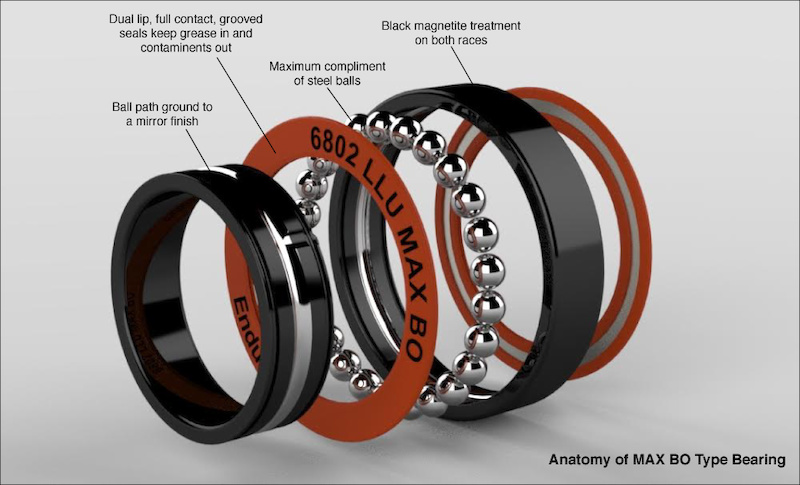

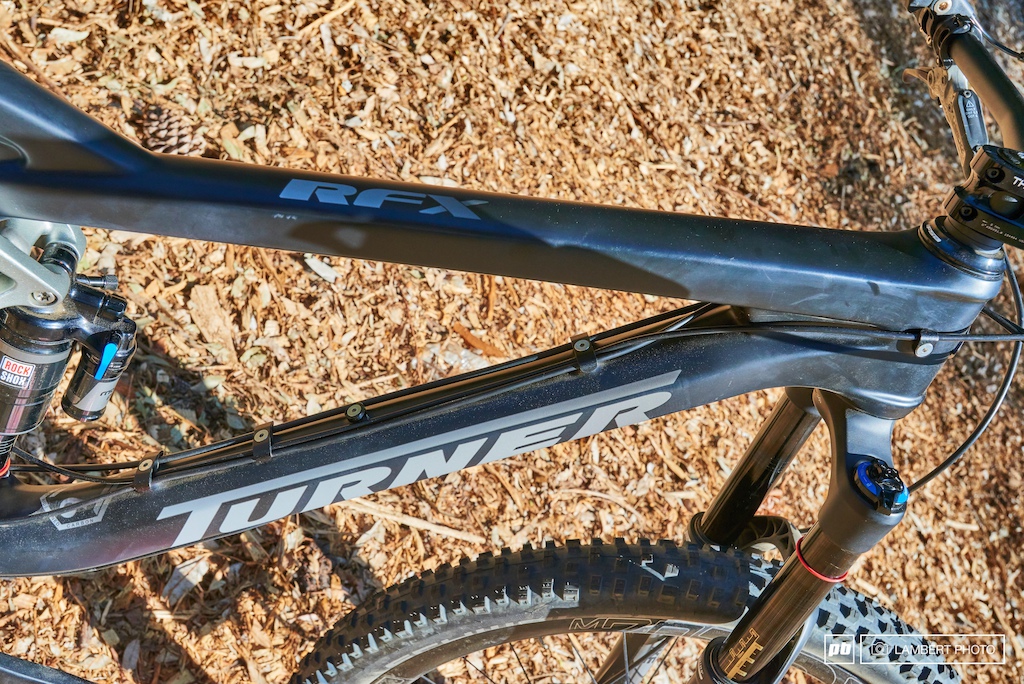

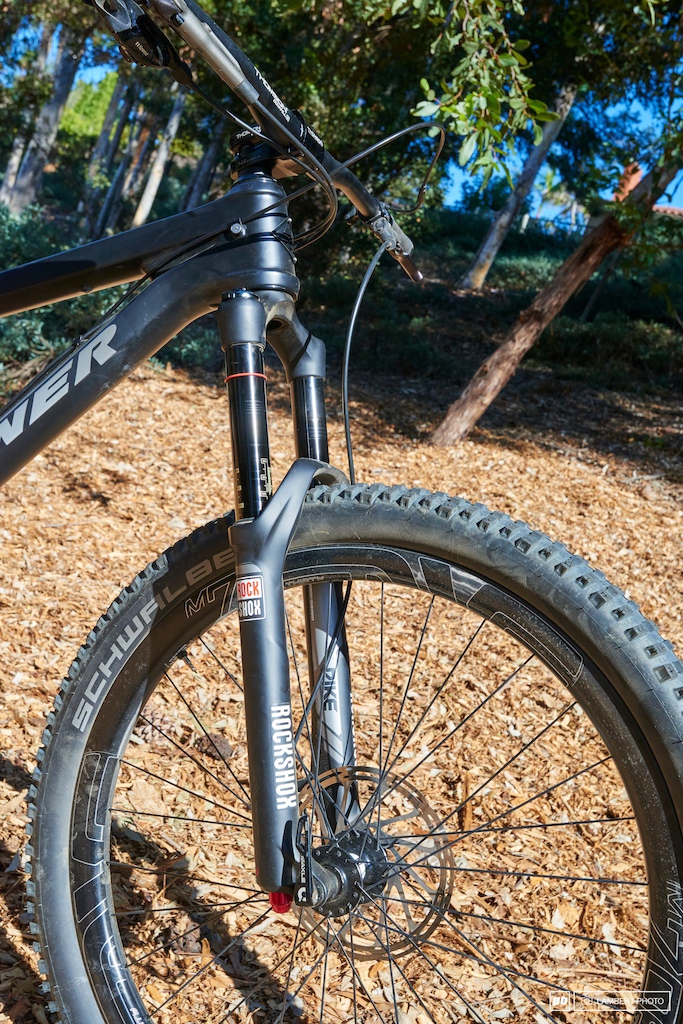


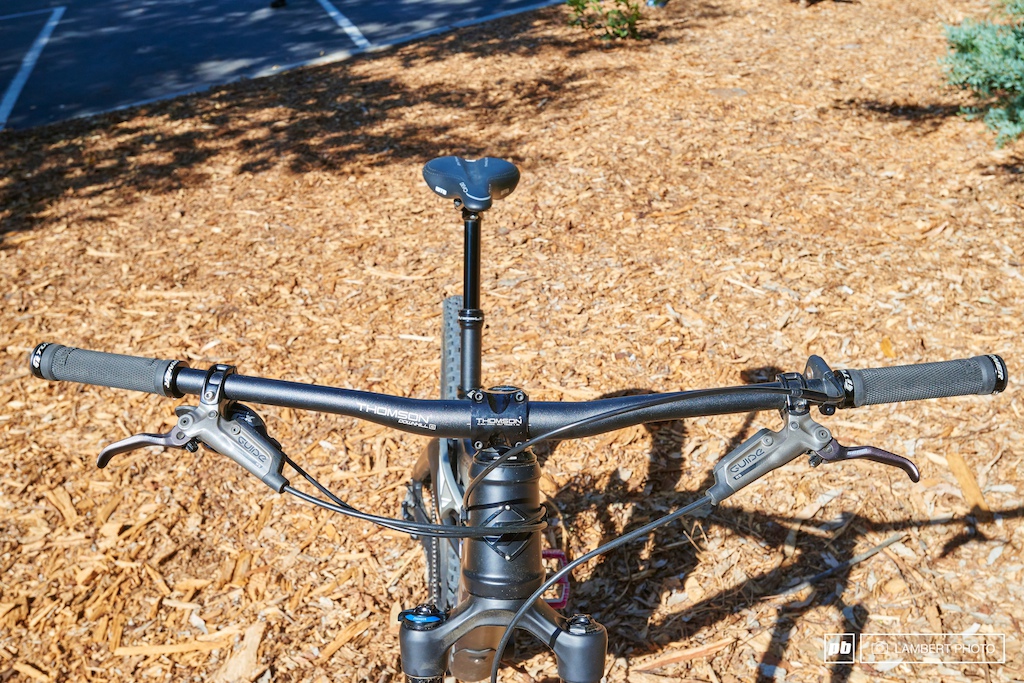

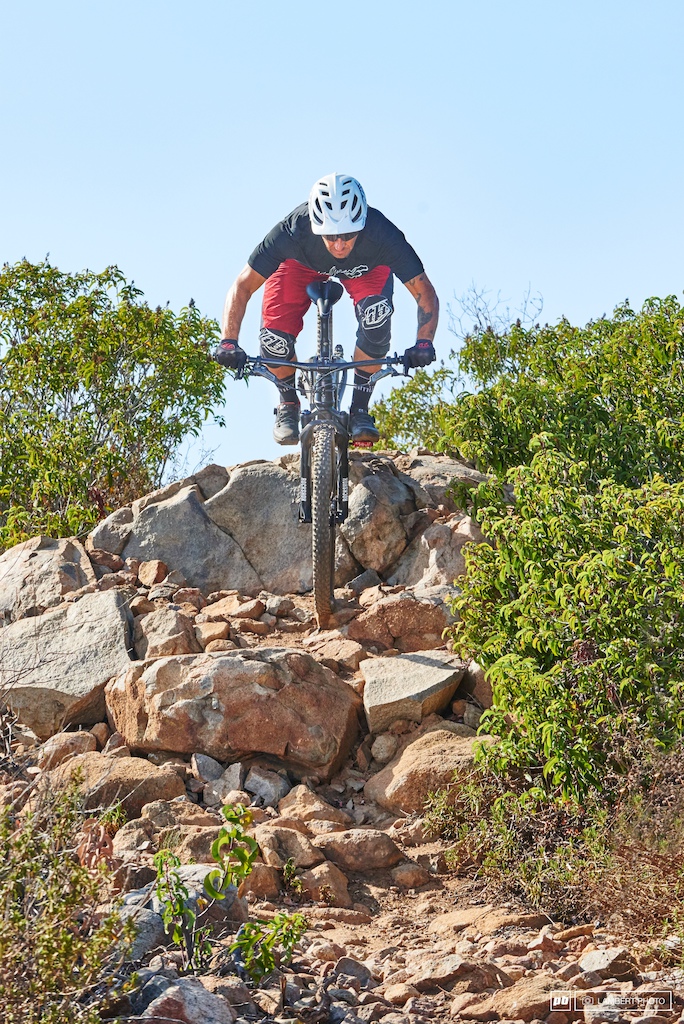

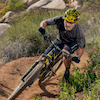
Giggidy
#nohomo
My thoughts exactly.
Damn the man! Save the Empire!
"The RFX v4.0 utilizes a PressFit 30 bb (PF30). The bottom bracket shell is 73mm wide."
Praxxis and Wheels Manufacturing offer PF30 BB's which use shells and cups which thread together inside the frame to each other, doing the job of pressing themselves in, which have step down bearings to run shimano or sram 24 and 24/22mm cranks. Externally they look close enough to regular external cup english thread BBs that those uninitiated in the things would be fooled.
wheelsmfg.com/bottom-brackets/pf30-outboard/pf30-outboard-bottom-brackets/pressfit-30-to-outboard-bottom-bracket-for-24mm-cranks-shimano-black.html
www.praxiscycles.com/conversion-bb
I would've liked to see an 8.2x2.5 shock like the proto DW RFX had a few years back but they did reduce the travel on this carbon version so I understand.
My mind is officially blown as to why no Boost 148 though?
Why boost? It is literally the most pointless "improvement" made to bikes since....
Actually I can't think of anything as pointless as boost.
about as pointless as boost
I'm seeing more bikes being released with Boost rear end including DH frames.
When I go to 650B I want the ability to switch wheelsets from AM bike to DH bike and visa versa. Boost seems to be a good idea on mini-link bikes as the lower link has the be squished between the BB and rear wheel still.
A few bike companies have said they DIDN'T make a new bike Boost due to lack of hubs, but now almost all the hub builders are coming onboard; including Chris King.
I'll give you a more pointless "improvement" made to a bike; QR15 front axles.
A) The hub gets 1mm longer. How does that allow for 6mm increase in flange spacing without the cassette/disc hitting the frame? I admit that the disc caliper can be moved outboard slightly on the rear, but that isnt the flange that wants moving, its the drive side flange that desperately needs to move outwards. Correct me if I'm wrong (I may well be) but I don't think boost improves the position of the drive side flange by much at all.
B) Ever hear of an offset rear end? Fixes the problem of uneven spoke tension in the rear wheel (which is a much much bigger prob than the flanges simply being too close), and uses standard components. At worst, it requires you to buy new spokes.
C) How is a 148mm hub any better than a 150mm hub? Hope 150mm hubs give you almost perfectly even spoke tensions on the rear. I don't believe the chainline argument at all. Moving the cassette (in the region of 45mm wide) 0.5mm in any direction isn't going to take a chainline from perfect to unworkable.
Don't get me wrong, I am perfectly ready to be corrected, I just don't see the advantage boost is claimed to give.
B) Yes, I've built them many times. But uneven spoke tension isn't the goal of boost. The goal is to widen the base of the triangle to change the bracing angle the spokes tension the rim at.
C) Its better for two reasons but the first thing that you and dozens of others on here need to learn is that 150mm hubs only compare to 135mm hubs. Except for the thru-axle they function the same way as a QR skewer hub in that the hub end caps fit flush against the inside faces of the dropouts. The only rear hubs that operate the same way, in that the end caps fit into slots in the dropouts are 142, 148 and 157. But 142 and 157 were designed to the same rotor/cassette/flange position standard. All 157 does over 142 for the majority of hub makers that still use full length freehub bodies is increase the end cap lengths to allow a wider swingarm and more tire clearance. It doesn't actually make the wheel any stronger. 148 however actually does make the wheel stronger, at the same time as improving tire clearance possibilities for designers.
C) 157 makes the wheel massively stronger than 142. It gives even spoke tensions (when flanges are positioned like hope do). Some hub manufacturers do position the non-driveside flange right next to the disc mount on their 150mm hubs. This gives better bracing angles yes, better than boost even, but also massively reduces the non-drive spoke tensions, leading to a weaker wheel.
157 gives no advantage over 150 other than offering a little cup for the end caps to sit into, making wheel fitting slightly easier.
The same is true for 142 over 135. Exactly the same performance, just with little cups to aid wheel fitting.
I now see that 148 gives improved flange spacing over 135/142, but not quite as good as 150 allows and still has the hugely uneve spoke tension issue. How is 148 any better than 150/157, or an offset 135/142, both of which solve the uneven tension issue?
Really, you will only see increased chain wear in your very bottom gear. You know, that one you hardly ever use. You will always have a weaker wheel tho. And this still goes back to my "using standard equipment instead of having to fork out for new wheels when I buy a new frame" point.
If you've built many you will know what I mean when I say that when applying force to the rim, either while untwisting the spokes during building or hard cornering while riding, it is extremely difficult to flex the rim towards the cassette, but actually worryingly easy to flex towards the disc side. Even with the driveside spokes done up to the max specified tension on the rim. This is entirely due to the ridiculous amount of dish normal wheels require. It is literally right on the limit of what is possible.
The inherent flex combined with the massively differing spoke tensions, again right on the limit of whats possible, is why I tend to replace the spokes on lighter rear wheels that see a lot of use every few years. At least the driveside ones. Tbh I haven't done much off road riding on any wheels that require much dishing for a few years, its all been 150's or single speeds. The spokes on these will pretty much last forever, as they do not require huge compromises during the wheelbuild.
Yes boost will help cure this problem, but the difference really is minimal, and really the non drive flange shouldn't be getting any further from the hub center until the driveside has moved out enough to make the tensions at least vaguely level. Moving the non drive flange out is almost gonna make things worse at this point.
Offsetting the rear end would give better spoke tensions than boost and would require little more than new spokes. Q factor surely isn't a problem now everyones on 1x anyway. Just put the chainring on the outside of the tabs and you've suddenly got acres of room to play with. You could even widen the stays for bigger tyres if you must.
Total cost of changing to an offset rear end frame? New spokes + labour
about 40 quid.
Total cost of changing to a boost frame? New wheels, tubeless kit, and don't you need some sort of offset chainring anyway?
about 400 quid.
And the offset rear end arguably works better.
Oh and don't forget boost forks. Nevermind that 29ers and fatbikes have been riding around on 100mm qr wheels for years, suddenly the standard 20mm axle and flange spacing dh bikes have been using for god knows how long isn't good enough. Your super hardcore 27.5 xc bike needs boost or your front wheel is just gonna be too weak to rely on. Seriously, whens the last time you broke a front wheel?
It would be MUCH better if the axle were pinched. This would truly distribute the stresses.
PBers seem to love to hate on Ellsworth, BUT their (Manitou as well for that matter) rear axle addresses this.
If you are buying their bike- who cares about a new standard?! Just a frame; and you want to use clapped out, dated wheels?! Dumb.
Flange height can improve bracing angle, but at the expense of increased spoke stress and nipple angle.
6mm may not seem like much until you take the integral of the cross-sectional area. Then, it matters.
Not to most riders, but to the machines that determine the limits in the 1st place.
I ride a new bike everything ≈18 months. I'd feel gypped if shit hadn't changed.
I need to not read PBhyperbole.
The axle should be pinched yes.
Flange height can improve bracing angle, in return for DECREASED spoke stress and worse nipple angle. Moving the flanges does exactly the same thing, it doesn't somehow sidestep the stresses put on the nipple. However on well made rims with angled holes this isn't really a problem.
The integral of the cross sectional area doesn't matter. A sensible bracing angle + sensible spoke tensions matter.
I buy a new frame second hand whenever I need one. Having to buy new hubs, rims, tyres, cranks, forks, seatpost, every time I need a new frame is a big problem. For years we have had incremental changes that mean any bike can be upgraded. Occasionally some change comes along that does require new parts to fit, but the advantage is so great that it is worth it. Disc brakes are a prime example of this.
However these days we get non incremental changes. Now even the most insignificant change requires pretty much an entire new bike, and often offers no real advantage. Like boost. I am not even slightly tempted to buy an entire new bike just to move my flanges out 3mm. Im not even slightly tempted to buy a boost frame next time I need a frame, as that would mean buying pretty much an entire new bike in order to get it rolling. For no speed advantage, and next to no durability advantage. The slightly improved lifespan of wheels certainly isnt going to save me as much as it costs me to get in the first place. An offset rear end however would work better and only require spending a little on some new spokes. The improved lifespan of my rear wheel would then pay for itself pretty quickly.
You will buy a new bike; it will have new technology. If you don't like it, search "vintage" on eBay.
Did I learn something new today, or did you?
Giant's warranty is lifetime for the original owner on defects.
Manufacturing in china/taiwan only helps so much when US customs slaps duty and tariffs on it the moment its imported.
Giant Australia, looking at you... I know a bunch of guys who have cracked top tube/seat tube welds.
Goes to show that hard work and countless years of R&D are not only worth it for his business... But also for the lucky people that buy this trail shredder.
142x12, threaded bb, and sweet geo numbers have got this thing looking spot on
Plus, the low standover height of Turner bikes REALLLLY helps out someone who is 26 years old but stuck at 5'2". Nearly every other bike brand's size small racks my family jewels.
freehubmag.com/articles/marin-attack-trail-c-xt9-review
Pros
- Surprisingly light (sorry, forgot to ask exact weight)
- Cruises over rocks / roots compared to a 26". The bike is def faster than mine.
- Long TT on paper, but certainly didn't feel like it when riding.
- Whippy but neutral handling. Balanced F/R off jumps.
- Lots of front end traction. The bike didn't push or wash out in places I expected it to.
- Pedaled just as well as a Mojo HDR (no surprise)
Cons
- Just a bit slower uphill initially (27.5 wheel intertia maybe?) compared to my 26".
- Not free? (can't bring myself to buy one just yet)
Turner were awesome too. Very friendly and they made sure to set up the bike properly, and ask what I thought when I returned.
The derailleur routing on the top of the chainstay seems like a really bad choice though? A rubber stay guard that routes the cable inside and protected would be a really nice change.
Could have used a bit steeper seat tube. Though I guess if you use the slacker headtube insert it would also steepen the seattube? But not sure I'd want the lower BB that comes with that?
And personally I'd rather have boost on a new bike. Might as well just be as future proof as you can on any new bike purchase? It's an inevitable change, so might as well get with it now. And what's wrong with stiffer wheels?
A lot to like!
RC, can you elaborate on this statement? Where are they supposed to mount the shock to make it cool? Top tube?
This RFX looks sick, though. I hope Dave sells a ton of em.
The ride is far more important
www.intensecycles.com/bikes/uzzi
However I don't think that's a fair statement of the RFX 4. I think it's got a unique enough look compared to all the other carbon bikes that have been out there for so long.
scontent-ord1-1.xx.fbcdn.net/hphotos-xft1/v/t35.0-12/11993924_10153557873030629_1585096702_o.jpg?oh=859c1a2ecb0fcc5ae327ee8f113c8eb1&oe=55F8E1B2
scontent-ord1-1.xx.fbcdn.net/hphotos-xat1/v/t35.0-12/11999242_10153561141225629_1162343357_o.jpg?oh=e71e9ca7ed5f016469e55eb33b8ee2db&oe=55F8D93A
scontent-ord1-1.xx.fbcdn.net/hphotos-xaf1/v/t35.0-12/11990960_10153561280625629_475003969_o.jpg?oh=b555a6bdfb13de2715493d378052e029&oe=55F9F88E
Weight is the class leader: meaning the heaviest by far at 6.5 pounds, and this must be the only DW link bike on the market that needs to use a "climb" setting when going up the hill!!! Congratulations!!!!